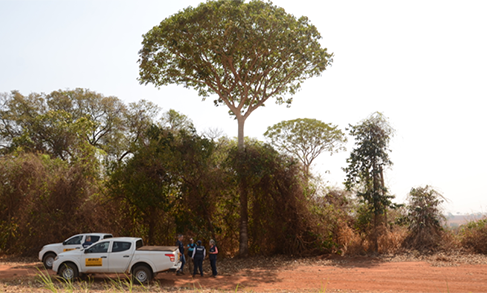PNAD Contínua
Unemployment shrinks to 8.0% in Q2
July 28, 2023 09h00 AM | Last Updated: August 01, 2023 01h47 PM

The unemployment rate was 8.0% in the quarter ended in June, the lowest result for the period since 2014. It is a reduction of 0.8 percentage points (pp) compared to the previous quarter (8.8%), in January to March. In comparison with the second quarter of 2022 (9.3%), the index fell by 1.3 pp. The data are from the Continuous National Household Sample Survey (PNAD), released today (28) by the IBGE.
In the second quarter of 2023 there were around 8.6 million unemployed persons in the country, a drop of 8.3% compared to the previous quarter and 14.2% compared to the same period of 2022. The number of employed persons, in turn, it was 98.9 million, an increase of 1.1% in the quarterly comparison and of 0.7% in the annual comparison.
"The second quarter recorded a decline in the unemployment rate, after growth in the first quarter of the year. This movement points to a recovery of the seasonal pattern of this indicator. On the employment side, the expansion of workers in public administration, defense, social security, education, human health and social services stands out in the quarter and in the year", highlights the coordinator of IBGE Household Sample Surveys, Adriana Beringuy.
The Continuous PNAD also revealed that the number of employees in the private sector without a formal contract reached 13.1 million persons, increasing 2.4% (303 thousand more persons) in the monthly comparison. There was stability in the annual comparison. The number of workers with a formal contract in the sector remained stable, totaling 36.8 million persons, but increasing 2.8% (991 thousand more persons in relation) to the same quarter last year.
The informality rate was 39.2% in the second quarter, against a rate of 39.0% in the first quarter, and of 40.0% in the same period of 2022. “Employment without a formal contract is the modality that stands out as responsible for the growth of employment in one of the segments of informality.” adds Ms. Beringuy.
In relation to the 5.8 million domestic workers, there was increase of 2.6% in the comparison with the previous quarter. In the comparison with the quarter from April to June 2022, the scenario was stable.
The number of employees in the public sector (12.2 million persons) grew 3.8% compared to the previous quarter. When compared to the same quarter of 2022, there was increase of 3.1%, an increase of 365 thousand persons.
The category of the self-employed workers, accounting for 25.2 million persons, recorded stability in the comparison with the previous quarter. In relation to the same period a year ago, the indicator in this quarter presented a decrease of 491 thousand persons.
Underutilization and discouragement drop in both comparisons
The composite underutilization rate (17.8%) had decreased in both comparisons: 1.0 pp in the quarter and 3.4 pp in the year. The total of underutilized persons reached 20.4 million, a reduction of 5.7 (1,224 less persons in relation to the previous quarter. IN the comparison with the same quarter last year, this inde fell 17.7 (4,385 less persons).
The number of discouraged persons also decreased, standing at 3.7 million. Compared with the previous quarter, the reduction was of 5.1% (199 thousand less persons) and, in the annual comparison, of 13.9% (593 thousand less persons). The percentage of discouraged workers in the workforce (3.3%) dropped 0.2 pp over the quarter and 0.5 pp. in the year.
The population out of the workforce was 67.1 million persons, remaining stable against the previous quarter and growing 3.6% (2.3 million more persons) against the same quarter of 2022.
Earnings remain stable in June
The usual real earnings (R$2,921) stood stable over the previous quarter and expanded 6.2% in the year. The usual real wage bill (R$284.1 billion) was also stable from the previous quarter, but increased 7.2% in the annual comparison (R$19 billion more).
By economic activities the scenario was stable in the quarter, but, in the year, the following categories had increase: Agriculture, livestock, forestry, fishery and aquaculture (7.1% or R$124 more), Industry (4.3% or R$115 more), Construction (7.8% or R$169), Trade, repair of motor vehicles and motorcycles (7.1% or R$161 more), Housing and food (8.2% or R$146 more), Public administration, defense, social security, education, human health and social services (5.0% or R$193 more) and Domestic services (6.5% or R$70 more).
The employment types also behaved in a stable way in the comparison with the previous quarter. Against the quarter of April to June 2022, however, there was increase in: Employees with a formal contract (3.3% or R$87 more), Domestic workers (6.5% or R$70 more), Employees in the public sector including statutory officials and the military, (4.1% or R$171 more), Employers (17.4% or R$1,108 more) and Self-employed persons (7.8% or R$169 more).
“In the quarterly comparison, the growth of the employed population was not enough to cause the wage bill to grow in view of the stability of earnings. Over the year, there is a scenario of increase both for employed population and earnings, that is, more persons working and with greater compensations”, explains Ms Beriguy.
More about the survey
The Continuous PNAD is the main instrument to monitor workforce in Brazil. The survey sample per quarter corresponds to 211 thousand households surveyed in Brazil. Nearly two thousand interviewers work in the survey in 26 states and in the Federal District, integrated to the data collection network of more than 500 IBGE branches.
Due to the Covid-19 pandemic, the IBGE implemented data collection by telephone on March 17, 2020. In July 2021, face-to-face data collection was resumed. The identity of the interviewers can be confirmed at the Answering the IBGE website or through the Call Center (0800 7218181), and their ID numbers can be requested by the informants.
See PNAD data on Sidra. The next release of Continuous PNAD, related to the quarter ended in June, will be on August 31.




















